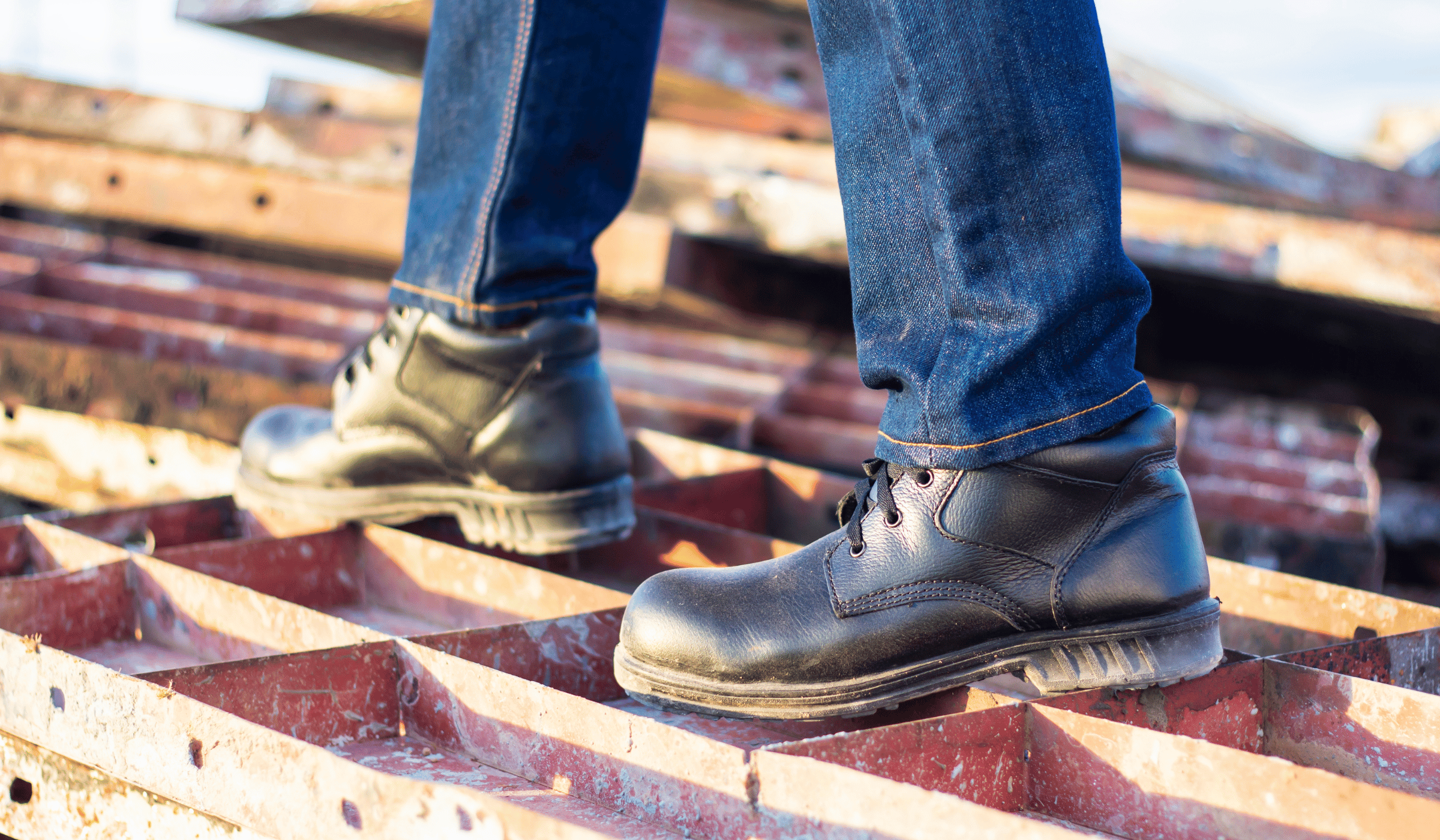When it comes to workplace safety, especially in industries like construction, manufacturing, warehousing, and oil & gas, proper footwear is more than just a comfort—it’s a necessity. Two common terms often used interchangeably are safety shoes and safety boots. But are they the same? And if not, which one should you choose?
This comprehensive guide explains the characteristics, benefits, and best practices of safety shoes and safety boots, as well as how to choose which is best for your specific work environment.
What Are Safety Shoes?
Safety shoes are low-cut protective footwear designed to protect feet from industrial hazards such as falling objects, punctures, chemical spills, and electric shock. Unlike safety boots, they do not extend past the ankle and are generally more lightweight and comfortable for everyday wear.
Common Features:
- Steel, composite, or alloy toe caps
- Slip-resistant soles
- Anti-static or electrical hazard protection
- Puncture-resistant midsoles
- Breathable upper materials
Pros of Safety Shoes:
- Lightweight and breathable: Ideal for hot environments or indoor use
- More flexible: Better mobility for roles involving a lot of walking or movement
- Office-to-factory compatibility: Suitable for those who move between the admin and work floors
- Comfort: Generally more comfortable for long hours on solid, flat surfaces
Best For:
- Logistics and warehousing
- Light manufacturing
- Automotive workshops
- Electrical work
- Admin staff with occasional site visits
What Are Safety Boots?
Safety boots are high-cut protective footwear that extends above the ankle and sometimes up to the mid-calf. They offer greater protection in rugged or hazardous environments, especially outdoors.
Common Features:
- High ankle or mid-calf coverage
- Waterproof or weather-resistant materials
- Steel/composite toe protection
- Puncture-resistant sole
- Heat, chemical, and oil resistance
- Insulation for cold or wet conditions
Pros of Safety Boots:
- Better ankle support: Reduces the risk of sprains in uneven terrain
- Greater protection: Ideal for environments with heavy machinery, chemicals, or falling objects
- Waterproofing: Useful for wet, muddy, or rainy conditions
- Durability: Built to withstand harsh outdoor work environments
Best For:
- Construction sites
- Oil & gas industries
- Mining
- Agriculture
- Outdoor electrical and utility work
- Heavy engineering

Key Differences Between Safety Shoes and Safety Boots
While both safety shoes and safety boots are designed to protect your feet in hazardous environments, they differ in design, protection level, and ideal use cases. Here’s how they compare:
1. Ankle Coverage
- Safety Shoes: These are low-cut and stop below the ankle. They’re ideal for work environments that don’t require much protection around the ankle area.
- Safety Boots: These extend above the ankle or even up to the mid-calf. This design provides additional ankle support and protection from external elements such as mud, water, and debris.
2. Weight
- Safety Shoes are generally lighter. This makes them more comfortable for long hours, especially if you’re constantly on the move indoors.
- Safety Boots are heavier due to the added material and coverage. While this adds to their durability and protection, it may be more tiring for users who walk or move around a lot.
3. Mobility
- Safety Shoes provide greater flexibility and ease of movement. Workers who are on their feet all day or need to walk, crouch, or bend frequently often prefer shoes for the freedom they provide.
- Safety Boots, while more protective, can slightly limit ankle movement. However, they provide critical support in environments where the ground is uneven or where there’s a higher risk of ankle injuries.
4. Protection Level
- Safety Shoes offer excellent toe protection and basic resistance against hazards like slips, punctures, and minor electrical risks.
- Safety Boots go a step further. Besides toe protection, they guard the ankle and lower leg from injuries caused by falling objects, chemicals, or contact with sharp tools and rough terrain.
5. Environment Suitability
- Safety Shoes are best for indoor or controlled environments, like warehouses, light manufacturing plants, electrical workshops, and logistics operations.
- Safety Boots are suited for rugged outdoor conditions such as construction sites, farms, oil fields, or mining operations where workers are exposed to water, mud, chemicals, or heavy machinery.
6. Appearance and Style
- Safety Shoes tend to have a more modern and stylish design. Some even resemble casual or athletic shoes, making them suitable for roles that transition between office and factory floors.
- Safety Boots have a more rugged, utilitarian appearance. While less stylish, their design reflects their purpose: full protection in high-risk environments.

How to Decide: Safety Shoes or Safety Boots?
The right choice depends on several factors, including your work environment, task complexity, exposure to hazards, and even your personal comfort preferences.
Let’s explore how to make the right decision.
1. Assess the Work Environment
Indoor vs Outdoor
- If your work takes place mostly indoors, in dry and controlled environments (e.g., warehouses, electrical shops, or offices with light industry), safety shoes are generally sufficient.
- If you’re working outdoors, on rough terrain, or in wet and muddy areas, safety boots are a better choice.
Temperature & Climate
- In hot climates, safety shoes offer better breathability.
- In cold or wet weather, safety boots provide insulation and waterproofing.
2. Consider the Nature of Hazards
- Falling Objects: Both safety shoes and boots come with toe protection, but boots may offer additional protection around the ankle and metatarsal area.
- Slippery Surfaces: Both types can be slip-resistant. Always check for SRC certification.
- Electrical Hazards: Choose footwear with EH (Electrical Hazard) ratings—available in both shoes and boots.
- Sharp Objects on the Ground: Puncture-resistant soles are available in both, but boots offer better protection for the ankle and shin.
- Chemical Exposure: Boots are more suitable for chemical splash zones and oil exposure.
3. Think About Movement and Flexibility
Jobs requiring frequent bending, climbing, or walking may benefit from the flexibility and lighter weight of safety shoes. However, jobs involving heavy lifting, working in ditches, or exposure to rolling equipment may require the structural support of boots.
4. Evaluate Duration and Frequency of Use
- For daily long hours: Comfort is critical. Lightweight safety shoes with breathable linings may be more comfortable.
- For occasional use: Choose based on the highest hazard you may encounter.
- For full-time field workers: Rugged, all-weather boots offer superior protection and longevity.
Which One Should You Choose?
There’s no one-size-fits-all answer, but here’s a simplified guideline:
Choose Safety Shoes if:
- You work indoors
- You need lightweight footwear
- Comfort and flexibility are priorities
- Your exposure to hazards is minimal or moderate
Choose Safety Boots if:
- You work outdoors or in rugged conditions
- You need full ankle support and waterproofing
- You’re exposed to chemicals, mud, or heavy machinery
- Your job involves high-risk, heavy-duty tasks
Final Thoughts
Understanding the difference between safety shoes and safety boots is essential for protecting workers effectively. Both have the same core purpose of keeping your feet safe, but are tailored for different environments and levels of danger.
When making a decision, consider your work setting, level of risk, and comfort needs. Whether you use lightweight safety shoes or high ankle protective boots, always ensure the product is certified and suitable for the purpose.
If you’re unsure, consult with a reliable safety footwear supplier who can guide you based on your unique needs. Your feet carry you through every task—make sure they’re properly protected.
